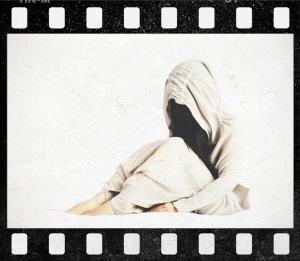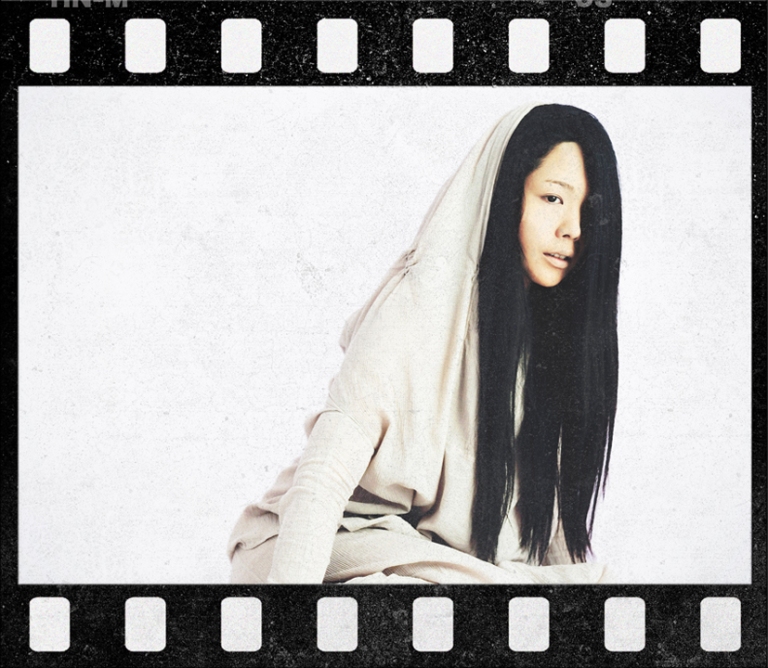“Wabi Sabi… to put it very simply, it means that it has an inner richness and a superficial beauty.”
That description, provided to me by Japanese model and designer, Yumix, seems reasonable, and simple enough to be true until you begin to question the ambiguous it.
What has an inner richness and a superficial beauty?
To elaborate, she said, “Wabi, wabishii, means accept(ing) the situation. Sabi, sabishii, means unique beauty born in past time.”
See, now we’re getting somewhere, only in that somewhere I’m as lost as a camel at sea. To uncover the true meaning of the term wabi sabi, is to work one’s way through overlapping riddles in Japanese language, history, subjectivity and culture.

I discussed the concept with Akiko Hirono, co-owner of the photography gallery, Edition One, in Santa Fe, who shared an article she wrote with her husband, Tim Wong – Learning to See the Invisible. In the article, the couple said, “What is wabi sabi? Ask a Japanese this question and there will likely be a long silence. Pose the same question to an American, however, the answer will often be quick and sure: “It’s beauty of things imperfect!” Why do the Japanese struggle for an answer to the meaning of wabi sabi that seems to come easily to Westerners? Could they be searching for a different answer altogether?”
Tim Wong is of Chinese descent and explored what is commpnly considered a Japanese term through its Chinese roots. “The term wabi sabi consists of two kanji 漢字 (Chinese characters) shared by Japanese and Chinese. Originally, wabi 侘 means ‘despondence’, and sabi 寂 means ‘loneliness’ or ‘solitude’. These are words for feelings, not for physical appearance of objects. The term embodies a refined aesthetic sensibility that was very evident in ancient Chinese art and literature long before the concept was popularized in Japan through the introduction of Zen Buddhism, literature, and the Tea Ceremony.”
If there is one nagging facet of the concept of wabi sabi, it’s that it is almost indefinable. I looked to Japanese natives to see if I could find an alluvial definition of the concept, but the waters that flow above it are lousy with swirls and cross currents.
“Wabi Sabi is a somewhat elusive concept even for Japanese people.” Akiko Katayama, host of Japan Eats, told me via email. “It is more of a feeling of gratitude for what is before us, than an aesthetic to be copied, as many Americans believe.
“To me, it represents a positive attitude towards what does not meet the standard of being fresh, lively, abundant or perfect. Sabi is the beauty that comes from the opposite of these characteristics, e.g. aged, imperfect and plain. Wabi is the attitude to appreciate Sabi. For example, an old leather bag that is worn out but has been well-taken care of, has Sabi. A tulip is falling apart, but the last 3 petals are showing the last spark of its life, that is Sabi. And if these things catch your eye and you have some deep feelings about them, you have the Sabi attitude. I think the Wabi Sabi concept is more important than ever in this global consumer society.”
When I first contacted Akiko Hirano to define it, she responded, “Oh boy! That is perhaps the most misunderstood concept and also the most difficult to explain, because it has to be felt rather than putting into words. I can only point the way so you can feel it. A warning: even if you can feel it, you may have difficulty putting that feeling precisely into words. Also, since it is a feeling, I will never know what you feel is the same as mine, for the same reason that we can never know whether a piece of chocolate tastes the same in your mouth versus mine. “
I’m back to not getting it.
The most infuriating part of writing this was trying to get a clear definition of the terms. I’m sure this is due in large part to westerners retranslating the terms into their own words, based upon a limited exploration of the cultural significance.
Japanology.org says, “Wabi originally described the loneliness of living in nature, far from society; sabi meant lean or withered, a flower past its bloom.” Neither of these definitions expressed attitude, which both Akiko’s said are important elements.
Akiko Hirano – “After researching the topic between ourselves and with other Japanese and Americans over the years, we came to the realization that a lot of Japanese thinking and views attributed in the West to wabi sabi have nothing to do with that concept. The tendency of Westerners to make up definitions—no matter how abstract and undefinable—probably skewed the understanding of wabi sabi not only for Americans, but also for younger Japanese who read Western literature. Notably, Okakura Kakuzo (1862-1913), author of ‘The Book of Tea‘ and ‘Ideals of the East‘, who introduced much Japanese thinking and aesthetic to the West, wrote extensively on Zen Buddhism, Daoism, the history of tea and art, but not a word on wabi sabi or imperfection.” (emphasis mine)
What It Isn’t
I can’t be sure if knowing what wabi sabi isn’t helps but…
I read a home décor blog that described the concept as, “using linen sheets that are always wrinkled and setting the table with mismatched dishes for dinner with friends.”
No. That’s not it at all.
In fact, native Japanese have a hard time describing it. It’s as though wabi sabi is an innate understanding embedded in their genetic history—a concept that doesn’t articulate well. It’s not an aesthetic you fake by purposely mismatching cutlery or by wearing hemp pants. Wabi sabi, if the terms must be merged, is sensibility, solitude, melancholy, appreciation for craft and simplicity; it’s a resignation within an aesthetic, not a makeover look.
Some History
Japanese architect, Tadao Ando, wrote an article about the concept called What is Wabi Sabi. He talked about the historical importance of wabi sabi as it relates to Japanese culture of accepting things the way they are. The terms wabi and sabi had for centuries, maintained distinct meanings. Mr. Ando said, “One teacher I talked with begged me not to use the phrase because she believes the marriage dilutes their separate identities.” This helps to explain the difficulty in describing the terms as one concept. A tea master from Kyoto told Tadao Ando that the words are thrown together because, “it sounds catchy, like ping pong.”
The history of the term is often told in the context of Zen Buddhism and the tea ceremony, as codified into Japanese culture by Sen no Rikyū. Tea ceremonies are taken seriously, with practitioners often using aged or cracked bowls, or utensils and cups that have imperfections in their glaze, sometimes due to age yet often by design. They are reminders to accept the beauty of the utility of the thing, whatever that useful thing is that serves an ascetic lifestyle.
Appreciation for utility over grandeur and fine food is expressed in this Buddhist teaching. “It is enough that the roof doesn’t leak, and your food satisfies your hunger.”
Putting wabi and sabi together like ping pong may indeed have a delutive effect on the concept.
Perhaps now it is like a marriage, one in which the couple has been together so long they’ve become one in the way they think and behave, despite the fact they were, in the long ago, unique individuals, with different backgrounds, ideas, mannerisms, and wonderment.
Finally…Purpose
Cheryl Hunter gave a TED Talk in which she told her story of moving to France with a friend and modeling dreams, only to be kidnapped, drugged, beaten, and raped repeatedly by two men. She reveals how, after they used her and dumped her off, she didn’t tell anyone for a long, long time because she thought of herself as a garbage, trampled on and left to rot.
She did become a model eventually and enjoyed the distant notoriety that comes from constantly moving to new locations and making new friends. At one of those places, she learned the concept of wabi sabi. In the days and weeks to follow she had a rising epiphany, a feeling that if she just internalized wabi sabi, she would no longer see her flaws, only aspects of her unique beauty. The acceptance of it changed her life; the sense that she was even more beautiful as a person because of her flaws. This was Cheryl’s sabi moment.
But before she could become the engaging, funny, public speaker and coach that she is today, she had to sit in it, rest among the violence and the self-destructive ideations one last time to know that it was time to cross that last meridian, the place you go when you are ready to vaporize the past.
I struggled for a long time to write this article. I didn’t want to write yet another dry version of this linguistic mashup or simply whine about what westerners get wrong. I struggled because I didn’t have a purpose for writing about it beyond my own curiosity. I kept writing to follow advice I’d read from Professor Edmund Bacon. “It’s in the doing that the idea comes.”
After hearing Cheryl Hunter’s talk, I found my resolution. I found it in sorrow.
John Koenig developed The Dictionary of Obscure Sorrows, a series of videos and a website for which he has created terms for feelings of pathos or melancholy that many of us have experienced but didn’t have a word for. This is my contribution to that quest and my purpose for writing this article.
Ukeiriko
Ukeiriko (oo-kay’-reeko) n. The feeling when you remain one last time in the place of the self-loathing and sadness that has crippled you, a place where you’ve learned to be comfortable despite the misery, a place of heavy skies and gnawing silence. You remain there until the feeling of acceptance overwhelms your fears, before you begin to un-freight yourself of anger, loneliness and negative energy to find your wabi sabi. It’s the feeling you let go of as you look across an imaginary ravine at your essential beauty, before you cross the last meridian into your magnificent life.
When you stop running from the past. When you stop letting it chase you, when the demon is no longer exhilarated by the hunt, it dies of stillness, and turns into the mulch that feeds your green shoots.
After suffering debilitating sadness, depression and self-loathing for so long you’ve forgotten any happiness that came before, you finally come to a place of acceptance, where you can allow the tenor of wabi sabi to meld into the waxy essence of who you are.
When the places you go are no longer fearful. And when you’re in those places, any place, you accept your flaws as marks of the full beauty that is you alone, majestic in its singularity.
Only when you understand wabi sabi in your heart, can you make it effective in your life.


Interesting
Thank you, Jack Bodmer
>
Thanks